Are you curious about body fat percentage and how it impacts health and appearance? Understanding body fat percentage is essential for achieving and maintaining a healthy body composition.
In this blog post, we will explore the different body fat percentage ranges, how to calculate them, and what they look like on different body types.
We’ll also discuss the importance of body composition and tips for achieving a healthy body fat percentage.
Join us as we dive into the world of body fat percentage comparison and learn how to achieve a healthier you.
Discover your body fat percentage and achieve your fitness goals with ease! Check out our body fat calculation
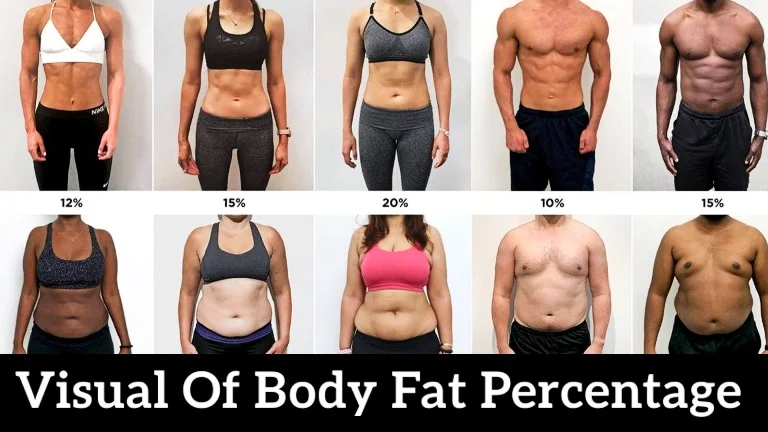
- Body Fat Percentage Photo For Men
- 2-5% Body Fat
- 6-7% Body Fat
- 8-10% Body Fat
- 10-13% Body fat
- 14-17% Body Fat
- 18-24% Body Fat
- >25% Body fat
- Male Body Fat Percentage Ranges Look Like
- 10% Body Fat Male
- 15% Body fat Male
- 20% Body Fat Male
- 25% Body Fat Male
- 30% Body Fat Male
- 35% Body fat Male
- 40% Body Fat Male
- Body Fat Percentage Photo For Female
- 10-13% Body Fat
- 14-20% Body Fat
- 21-24% Body Fat
- 25-31% Body Fat
- >32% Body Fat
- Female Body Fat Percentage Ranges Look Like
- 10% Body Fat female
- 15% Body Fat Female
- 20% Body Fat Female
- 25% Body Fat Female
- 30% Body fat Female
- 35% Body Fat Female
- 40% Body Fat Female
- 45% Body Fat Female
- 50% Body Fat Female
- Male Body Fat Percentage Chart Photo
- Female Body Fat Percentage Chart Photo
- Why Body Fat Percentage Matters
- ACE Body Fat Percentage Chart
- FAQs
- How To Measure Body Fat Percentage
- At what body fat percentage do you see abs?
- What is a healthy range for body fat percentage?
- Conclusion
Body Fat Percentage Photo For Men
2-5% Body Fat
This range is extremely lean. Only bodybuilders can achieve this level of leanness during competition preparation.
Muscles, veins, and striations are highly visible, but maintaining this level of body fat is not recommended. The minimum essential level for organ function is 2%.

6-7% Body Fat
Although the range is not as extreme as the competition bodybuilder level, it is still difficult to maintain and not sustainable.
Muscle definition is visible in most muscle groups, and some vascularity is present in areas such as arms, legs, and abs.

8-10% Body Fat
This range is considered a healthy level for most men, with good muscle definition and visible abs at the lower end of the range.
Veins are less clear in these percentages. This level is achievable through consistent exercise and a balanced diet.

10-13% Body fat
This is a sustainable level for men and is often considered the “beach body” level. Abs are visible, but not as chiseled as with lower body fat percentages.

14-17% Body Fat
At this range, the muscles are still visible, but they are less defined than at lower levels of body fat. This range is still considered healthy for most men, with good fitness and athletic performance.

18-24% Body Fat
This range is still considered healthy for most men, but with less visible muscle definition and more body fat covering the muscles.
It is still possible to achieve this level through consistent exercise and a balanced diet.

>25% Body fat
This level is considered overweight or obese for most men, with significant body fat covering the muscles and little to no visible muscle definition.
At this range, you are more likely to get heart disease, diabetes, or joint problems. Exercise and a healthy diet can help you lose body fat and improve your overall health.
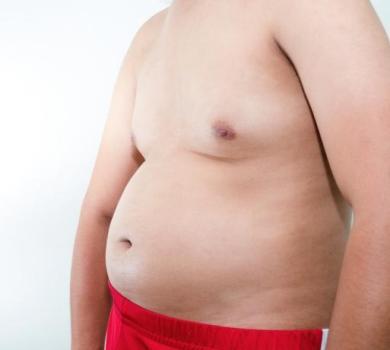
Male Body Fat Percentage Ranges Look Like
10% Body Fat Male
At 10% body fat, a male is considered to have a very lean and defined physique with visible abs and vascularity.
This level of body fat is often seen in athletes and bodybuilders who are in peak physical condition.
However, maintaining this level of body fat for extended periods may not be sustainable or healthy for everyone, as it requires strict diet and exercise regimens.

15% Body fat Male
15% body fat usually falls into the “lean and fit” category. Muscle outlines are visible but not separated. Some veins and muscles can be seen but are covered by a thin layer of fat.

20% Body Fat Male
At this level, muscle definition is not as visible, particularly in the abdomen. A male with 20% body fat may have a soft look and a slight pouch on his abdomen.

25% Body Fat Male
There is almost no separation of muscles, veins are not noticeable, and the waist may be increasing. This level is considered to be obese.
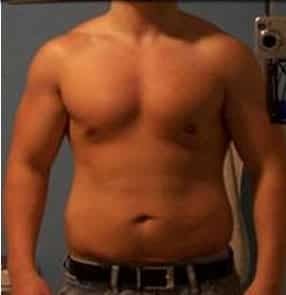
30% Body Fat Male
At this level, more fat is present around the body, particularly in the waist, back, thighs, and calves.
The waist will appear larger relative to the hips, and the male’s stomach will most likely be protruding noticeably over the waist.

35% Body fat Male
Fat tends to accumulate in the stomach or gut, creating a “beer gut” appearance. The waist circumference may be over 40 inches.
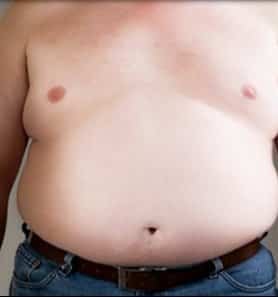
40% Body Fat Male
At this level, even more fat is in the stomach and waist area. Daily activities, such as walking up stairs or reaching for something, can be difficult at this level.
A male with 40% body fat is considered to be morbidly obese.

Body Fat Percentage Photo For Female
10-13% Body Fat
This range of body fat is very low and is typically only achieved by female bodybuilders and athletes who are in peak condition. At this range, muscle striations, veins, and muscle definition are very visible.
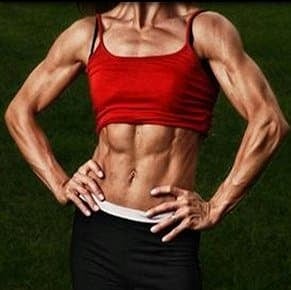
14-20% Body Fat
This range is considered low to moderate for women. Muscles are still visible, but they are not as defined as in the lower range. Vascularity is less noticeable than in the lower range, and a slight layer of fat may cover the muscles.

21-24% Body Fat
This range is considered moderate for women. The outline of muscles is still visible, but there is less visible muscle definition. The layer of fat over the muscles becomes more noticeable.

25-31% Body Fat
This range is characterized by a high body fat percentage for women. Muscles become less apparent, and more fat covers them. Some fat may accumulate around the waist and hips.

>32% Body Fat
This range is considered very high for women and is associated with increased health risks.
The accumulation of fat throughout the body is accompanied by a noticeable widening of the waistline.
There may also be fat accumulation around the arms, legs, and face.
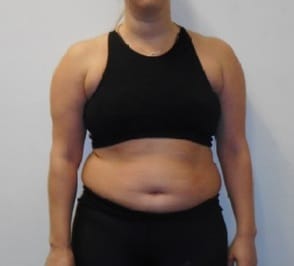
Female Body Fat Percentage Ranges Look Like
10% Body Fat female
A female with 10% body fat would have a lean physique with visible muscle definition, vascularity, and well-defined abdominal muscles.
This level of body fat is considered low and may not be sustainable for all women.
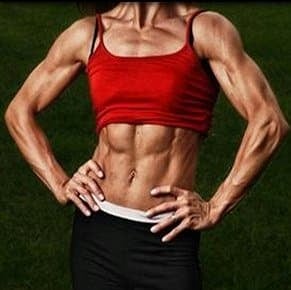
15% Body Fat Female
If the female’s body fat percentage is 15%, the muscles are still noticeable, with defined abs, legs, and arms. There is some separation between muscles and slight vascularity.
Due to the low body fat level, women at this level may not have as much curve in their hips and buttocks. It is a prevalent body fat level among fitness models.
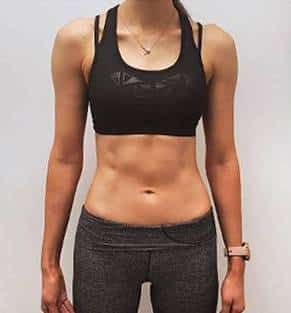
20% Body Fat Female
In most body fat charts, the fit category is the most prevalent range. It’s the most common among female athletes who have body fat near 20%
Women in this category typically exhibit some abdominal definition, with only a minimal amount of visible body fat on their arms and legs.

25% Body Fat Female
Women at this percentage are within the lower range of average body fat.
Although not overweight, there is typically more fat around the hips and buttocks, and muscle definition is not as apparent.

30% Body fat Female
While there may not be a significant visual difference from 25%, this level is considered a high average for women.
Fat accumulation in the hips and buttocks region is more pronounced.

35% Body Fat Female
According to the ACE chart, a body fat percentage of 35 is considered to be overweight.
The body accumulates more fat, leading to a fuller and rounder face and neck and more pronounced belly fat.
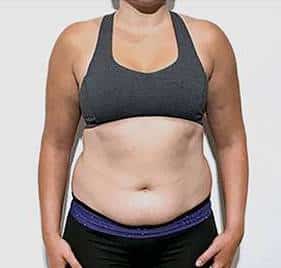
40% Body Fat Female
Women at this level are considered obese, with an unbalanced muscle-to-fat ratio.
Although they don’t seem to have a lot of fat, their muscle mass is probably low, making their percentage 40%
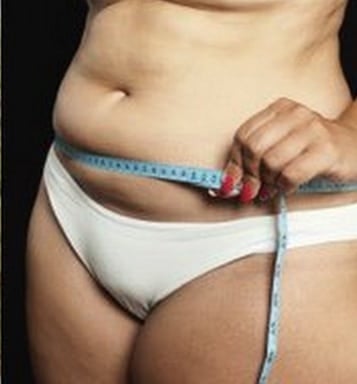
45% Body Fat Female
At this level, hips become noticeably wider than shoulders, and hip circumference may reach 45+ inches, with waist circumference at 35+ inches. The skin may also begin to lose its smooth texture.
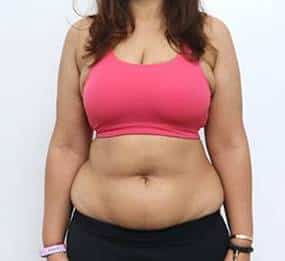
50% Body Fat Female
Women at this percentage will likely have more dimpled or “cottage cheese” looking skin. Hip circumference may reach 45+ inches, with waist circumference at 40+ inches.
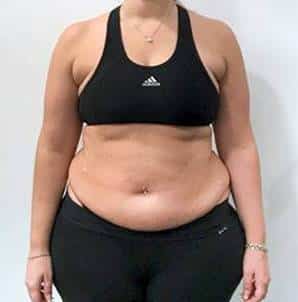
Male Body Fat Percentage Chart Photo

Female Body Fat Percentage Chart Photo
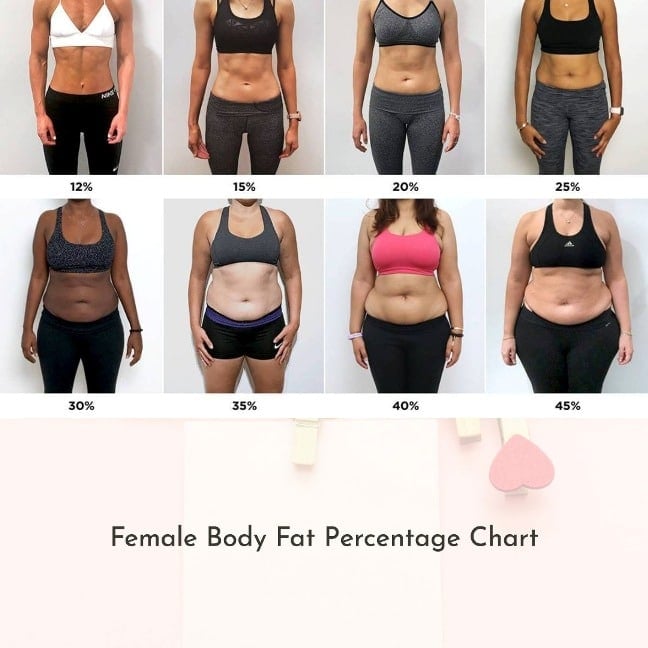
Why Body Fat Percentage Matters
Body fat, also known as ‘adipose tissue,’ serves multiple functions, including energy storage, hormone secretion, and cushioning and insulation.
Body fat percentage measures the amount of fat in the body relative to total body weight. It represents the proportion of fat mass to lean body mass.
Body fat percentage is a better indicator of overall health and fitness than simply measuring body weight or body mass index (BMI) alone.
A healthy body fat percentage can vary depending on age, gender, and activity level. Generally, men have a lower body fat percentage than women.
According to the ACSM, the recommended body fat percentage ranges are as follows:
It’s important to note that too little or too much body fat can harm your health.
- Having too little body fat can lead to hormonal imbalances and an increased risk of osteoporosis,
- Having too much body fat can increase the risk of heart disease, diabetes, and other health problems.
It is, therefore, important to maintain a healthy body fat percentage for overall health and well-being.
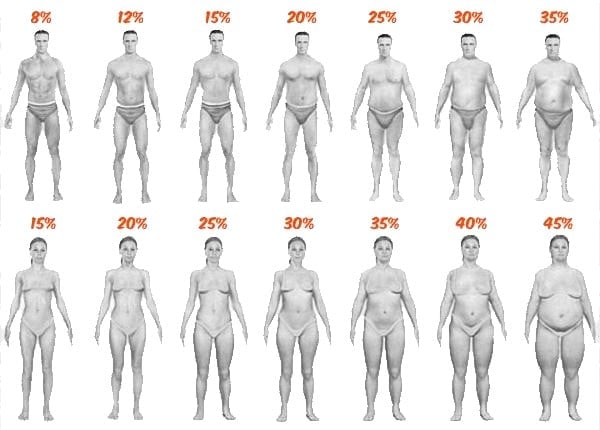
ACE Body Fat Percentage Chart
The American Council on Exercise, Body Fat categorization is one of the most commonly used body fat charts.
As illustrated by the below chart, women have a higher body fat percentage than men at a given level.
This is due to differences in physiological functions, including hormones, breasts, and sexual organs. Furthermore, women require a higher amount of body fat for ovulation.
| Classification | Women | Men |
|---|---|---|
| Essential Fat | 10-13% | 2-5% |
| Athletes | 14-20% | 6-13% |
| Fitness | 21-24% | 14-17% |
| Acceptable | 25-31% | 18-24% |
| Obese | >32% | >25% |
Know More Fat Lose Calories Requirement: Weight Loss Calories Calculator
FAQs
How To Measure Body Fat Percentage
There are several methods for measuring body fat percentage, including:
- Skinfold Calipers Method
- Us Navy method.
- Bioelectrical Impedance Method
- Hydrostatic Weighing Method
- Air displacement plethysmography (ADP)
- DEXA Scan Method
- 3-D Body Scanners
At what body fat percentage do you see abs?
Men usually have visible abs around 10-12% body fat, and more defined abs around 8-10% body fat.
Women may start to see abs around 16-19% body fat, with more defined abs around 14-16% body fat.
What is a healthy range for body fat percentage?
A healthy body fat percentage can vary depending on age, gender, and fitness level.
Generally, a healthy range for men is between 10 and 20% body fat, while women should aim for 20 to 30%.
Conclusion
The ability to assess your body fat percentage is an essential component of maintaining optimal health.
With the tips and strategies in this guide, you can work toward a healthy body fat percentage and improve your health and well-being.
Remember, it’s never too late to start making changes and taking control of your health.

Manish brings over 10 years of hands-on experience in weight lifting and fat loss to fitness coaching. He specializes in gym-based training and has a lot of knowledge about exercise, lifting technique, biomechanics, and more.
Through “Fit Life Regime,” he generously shares the insights he’s gained over a decade in the field. His goal is to equip others with the knowledge to start their own fitness journey.
